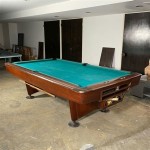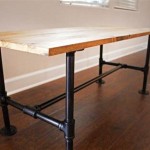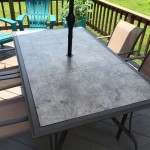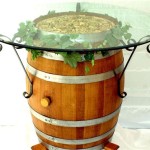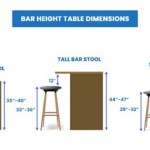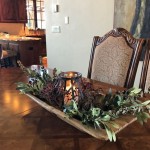Wood Table Painting Ideas: Transforming Your Table with Color and Style
Painting a wood table presents an opportunity to revitalize its appearance, personalize its style, and protect its surface. Whether aiming for a rustic farmhouse aesthetic, a modern minimalist look, or a vibrant artistic statement, careful planning and execution are crucial for achieving a durable and aesthetically pleasing outcome. This article explores various wood table painting ideas, encompassing preparation techniques, paint selection considerations, and stylistic approaches to help transform a table into a focal point of any room.
The success of any wood table painting project hinges on thorough preparation. This foundational step ensures proper paint adhesion, longevity, and a professional-looking finish. Neglecting preparation can lead to paint peeling, chipping, and an overall unsatisfactory result. The process typically involves cleaning, sanding, and priming the table's surface, each contributing to a smooth and receptive base for the paint.
Preparation Techniques for Wood Table Painting
The preparation phase begins with a comprehensive cleaning of the wood table. This removes any dirt, grease, wax, or other contaminants that could impede paint adhesion. A mild detergent solution and a soft cloth are generally sufficient for most surfaces. For stubborn grime, a specialized wood cleaner might be necessary. Ensure the table is completely dry before proceeding to the next step. Avoid using harsh chemicals that could damage the wood.
Sanding is a vital step in preparing a wood table for painting. It creates a slightly roughened surface, allowing the paint to grip more effectively. The appropriate grit of sandpaper depends on the existing finish of the table. For tables with a glossy finish, begin with a medium-grit sandpaper (around 120-grit) to break down the sheen. Follow this with a finer-grit sandpaper (around 220-grit) to smooth out the surface. Tables with a previously painted or stained finish might require more aggressive sanding to remove loose or flaking material. Always sand in the direction of the wood grain to avoid scratches and ensure a uniform surface. Dust thoroughly using a tack cloth after sanding.
Priming is the final preparatory step, and it’s particularly important for bare wood or tables with stains or blemishes. Primer acts as a barrier, preventing the underlying wood from absorbing the paint unevenly and potentially causing discoloration. It also provides a uniform surface for the paint to adhere to, improving its durability and coverage. Choose a primer specifically designed for wood surfaces. Apply the primer in thin, even coats, following the manufacturer's instructions. Allow the primer to dry completely before proceeding to painting.
Selecting the appropriate paint for a wood table is paramount to achieving the desired aesthetic and ensuring long-term durability. Different types of paint offer varying degrees of resistance to wear and tear, ease of application, and aesthetic qualities. Factors to consider include the intended use of the table, the desired level of sheen, and the overall style of the room.
Paint Selection Considerations for Wood Tables
Acrylic latex paint is a popular choice for wood tables due to its durability, ease of application, and low odor. It is water-based, making it easy to clean up with soap and water. Acrylic latex paint is also relatively fast-drying and available in a wide range of colors and sheens. It is suitable for most interior wood surfaces and provides good resistance to scratches and stains. However, it may require a primer for optimal adhesion and coverage, particularly on bare wood.
Oil-based paint offers superior durability and a smoother, more lustrous finish compared to acrylic latex paint. It is more resistant to scratches, chips, and stains, making it a suitable option for high-traffic tables or those subjected to frequent use. However, oil-based paint has a stronger odor, requires longer drying times, and necessitates mineral spirits for cleanup. It is also less environmentally friendly than acrylic latex paint. Due to its more complex application and cleanup process, oil-based paint is often preferred by experienced painters.
Chalk paint is a decorative paint known for its matte finish and ability to adhere to a variety of surfaces with minimal preparation. It is often used to create a distressed or vintage look. Chalk paint is easy to apply and can be easily sanded or layered to achieve different effects. However, it is less durable than acrylic latex or oil-based paint and requires a sealant or wax topcoat to protect the finish. Chalk paint is a good choice for those seeking a rustic or shabby chic aesthetic.
Beyond paint type, selecting the appropriate sheen level is also crucial. Sheen refers to the amount of light that reflects off the painted surface. Flat or matte sheens offer a non-reflective finish that can hide imperfections and create a soft, understated look. Satin sheens provide a subtle sheen that is easy to clean and offers good durability. Semi-gloss sheens are more reflective and durable, making them suitable for high-traffic areas. Gloss sheens offer the highest level of reflectivity and durability, but they can also highlight imperfections. The choice of sheen depends on the desired aesthetic and the intended use of the table.
Once the table is prepared and the paint is selected, the next step is to apply the paint. Careful application techniques are essential for achieving a smooth, even, and professional-looking finish. The choice of application method, whether using a brush, roller, or sprayer, also influences the final result.
Stylistic Approaches to Wood Table Painting
For a classic and timeless look, consider painting the wood table a solid, neutral color. White, off-white, gray, and beige are versatile options that complement a variety of décor styles. These colors create a clean and sophisticated look that can easily be accessorized with different textiles and decorative items. A solid color finish is also relatively easy to achieve and maintain.
To introduce a touch of color and personality, opt for a bold or vibrant hue. Teal, navy blue, emerald green, or even a bright yellow can transform a wood table into a statement piece. Consider the existing color palette of the room and choose a color that complements or contrasts it effectively. Balance bold colors with neutral accents to prevent the space from feeling overwhelming.
Distressing techniques can add character and charm to a painted wood table. This involves intentionally creating areas of wear and tear to reveal the underlying wood or previous paint layers. Common distressing techniques include sanding edges, corners, and other areas that would naturally experience wear over time. Applying a dark wax or glaze can further enhance the distressed look. Distressing is particularly well-suited for creating a farmhouse or vintage aesthetic.
Instead of painting the entire table one color, consider incorporating painted accents or patterns. Painting the legs a different color than the tabletop can create visual interest. Stencils can be used to apply intricate patterns or designs. Geometric patterns, floral motifs, or even personalized monograms can add a unique touch to the table. Ensure the patterns are consistent with the overall style of the room.
A two-toned finish can add depth and dimension to a wood table. This involves painting the table two different colors, typically with one color serving as a base and the other as an accent. For example, the tabletop could be painted a dark color, while the legs are painted a lighter color. Alternatively, a lighter color could be applied over a darker base, and then sanded back in certain areas to reveal the underlying color. A two-toned finish can create a sophisticated and visually appealing look.
For a truly unique and personalized look, consider incorporating artistic painting techniques. This could involve creating a custom pattern, using a sponge or rag to apply paint, or even creating a mural on the tabletop. Artistic painting techniques require more skill and creativity, but they can result in a one-of-a-kind piece that reflects the owner's personal style.
After the paint has dried completely, applying a protective topcoat is crucial for ensuring the longevity and durability of the finish. Topcoats provide a barrier against scratches, stains, and other types of wear and tear. They also enhance the sheen of the paint and make the table easier to clean.
Polyurethane is a popular topcoat option for wood tables due to its durability and resistance to water and chemicals. It is available in both water-based and oil-based formulas. Water-based polyurethane is easier to clean up and has a lower odor, while oil-based polyurethane provides a harder and more durable finish. Polyurethane is available in a variety of sheens, from matte to gloss. Apply polyurethane in thin, even coats, following the manufacturer's instructions. Allow each coat to dry completely before applying the next.
Wax is another option for sealing and protecting painted wood tables, particularly those finished with chalk paint. Wax provides a soft, matte finish and enhances the texture of the paint. It also provides some protection against scratches and stains. Apply wax in thin, even layers using a brush or cloth. Buff the wax to a soft sheen using a clean cloth. Wax requires periodic reapplication to maintain its protective qualities.
Polyacrylic is similar to polyurethane but is specifically formulated for use over light-colored paints. It is less likely to yellow over time than polyurethane. Polyacrylic is water-based, making it easy to clean up and low in odor. Apply polyacrylic in thin, even coats, following the manufacturer's instructions. Allow each coat to dry completely before applying the next.
The choice of topcoat depends on the type of paint used, the desired level of durability, and the desired sheen. Regardless of the topcoat chosen, proper application is essential for achieving a smooth, even, and protective finish.

Painting Kitchen Tables S Ideas Tips From

40 Diy Spray Paint Projects That Re Old Items Furniture Makeover Decor Painted

6 Great Paint Colors For Kitchen Tables Painted Furniture Ideas Table Makeover Redo

Kitchen Table Makeover With Chalky Finish Paint Kelly Leigh Creates

20 Perfectly Painted Tables That You Can Do Yourself

Diy Dining Table Makeovers Before Afters The Budget Decorator

Pin By Mindy Robbins On Repurposing The Soul Painted Kitchen Tables Table Makeover Chairs

How To Paint A Table In 7 Steps Beamin Moore

Easy Tutorial To Paint A Table Correctly Painted Furniture Ideas Dining Kitchen Tables

An Easy Side Table Makeover With Fusion Mineral Paint My Family Thyme

